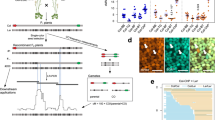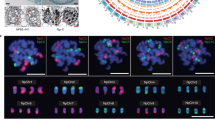Abstract
THE interesting announcement of Dr. J. W. Heslop Harrison (NATURE, January 9, p. 50) that he has found a single pair of sex chromosomes in certain polyploid species of Salix will, if confirmed, add to our knowledge of sex chromosomes in diœcious plants, but does not necessarily alter any of the current views regarding the origin of polyploidy. The fundamental fact that the chromosomes in many plant genera occur in arithmetical series, shows that the process of multiplication in number is one that affects all the chromosomes simultaneously. This is true however the change comes about, whether, for example, through a suspended mitosis or by the union, in hybridisation, of nuclei the chromosomes of which are sufficiently incompatible to be unable to pair in the following meiosis. Multiplication of the whole chromosome series through a condition involving a suspended mitosis is well known to occur naturally in various plant tissues and has been produced experimentally by a variety of methods.
This is a preview of subscription content, access via your institution
Access options
Subscribe to this journal
Receive 51 print issues and online access
$199.00 per year
only $3.90 per issue
Buy this article
- Purchase on SpringerLink
- Instant access to full article PDF
Prices may be subject to local taxes which are calculated during checkout
Similar content being viewed by others
Author information
Authors and Affiliations
Rights and permissions
About this article
Cite this article
GATES, R. Polyploidy and Sex Chromosomes. Nature 117, 234 (1926). https://doi.org/10.1038/117234a0
Issue date:
DOI: https://doi.org/10.1038/117234a0
This article is cited by
-
Polyploidy and the sex chromosomes
Acta Biotheoretica (1953)



